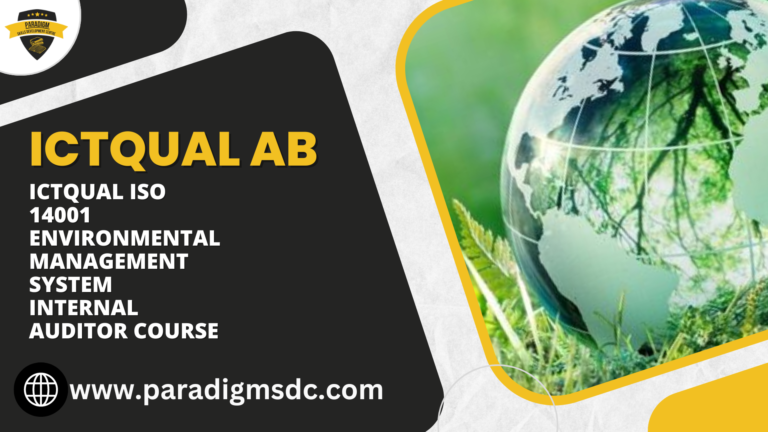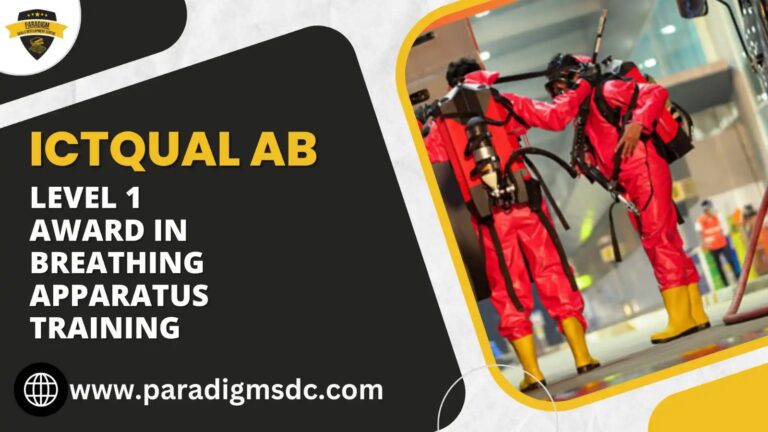Course Introduction
In today’s digital landscape, effective IT governance is crucial for organizations aiming to align their IT strategies with business goals. The ICTQual ISO/IEC 38500 IT Governance Lead Auditor Course is designed to equip professionals with the knowledge and skills necessary to evaluate and improve IT governance practices within their organizations. This course follows the ISO/IEC 38500 standard, providing a framework for the effective governance of IT.
Course Overview
The ISO/IEC 38500 standard offers guidance to organizations on how to ensure that their IT systems are used effectively and responsibly. This course will cover the principles, framework, and process of IT governance, emphasizing the auditor’s role in evaluating IT governance frameworks. Participants will learn to conduct audits, assess compliance, and make recommendations for improvements in IT governance.
Key Topics Covered:
- Introduction to IT Governance
- ISO/IEC 38500 Framework and Principles
- The role of IT governance in organizational strategy
- Audit methodologies and techniques
- Reporting and communicating audit findings
- Continuous improvement of IT governance
Course Study Units
- Introduction to Privacy Management:
- ISO/IEC 38500 Principles and Concepts:
- Roles and Responsibilities in IT Governance:
- IT Governance Frameworks and Models:
- Audit Planning and Execution:
- Audit Techniques and Tools:
- Compliance Assessment and Evaluation:
Learning Outcomes
By the end of this course, participants will be able to:
- Introduction to Privacy Management:
- Understand the fundamental concepts and principles of privacy management within the context of IT governance.
- Recognize the importance of privacy protection and compliance with relevant regulations and standards.
- Identify the key components of a privacy management framework and its integration into broader IT governance practices.
- Appreciate the role of privacy management in enhancing trust, reputation, and customer satisfaction for organizations.
- Gain awareness of common challenges and best practices in privacy management implementation and maintenance.
- ISO/IEC 38500 Principles and Concepts:
- Explain the principles outlined in the ISO/IEC 38500 standard, including accountability, responsibility, strategy, acquisition, performance, conformance, and human behavior.
- Understand the key concepts and terminology used in ISO/IEC 38500 and their significance in governing IT within organizations.
- Analyze how adherence to ISO/IEC 38500 principles can contribute to effective IT governance and organizational success.
- Apply ISO/IEC 38500 principles to real-world scenarios to address governance challenges and optimize IT decision-making processes.
- Evaluate the alignment of existing IT governance practices with ISO/IEC 38500 standards and identify areas for improvement.
- Roles and Responsibilities in IT Governance:
- Identify the roles and responsibilities of governing bodies, senior management, and IT professionals in IT governance processes.
- Understand the accountability structures and decision-making mechanisms within organizations related to IT governance.
- Analyze the interdependencies and interactions among different stakeholders involved in IT governance.
- Recognize the importance of clear roles and responsibilities in fostering accountability, transparency, and effective communication within organizations.
- Evaluate the effectiveness of existing role definitions and propose enhancements to optimize IT governance structures.
- IT Governance Frameworks and Models:
- Explore popular IT governance frameworks and models, such as COBIT, ITIL, and ISO/IEC 27001, and understand their key principles and components.
- Compare and contrast different IT governance frameworks and their applicability to various organizational contexts and objectives.
- Evaluate the strengths and limitations of each framework/model in addressing specific governance challenges and requirements.
- Assess the readiness of organizations to adopt and implement specific IT governance frameworks/models based on their goals, resources, and capabilities.
- Develop strategies for integrating multiple IT governance frameworks/models to create a customized governance approach tailored to organizational needs.
- Audit Planning and Execution:
- Develop audit objectives, scope, and criteria based on organizational goals, regulatory requirements, and best practices.
- Plan and organize audit activities effectively, considering resource allocation, timelines, and stakeholder expectations.
- Conduct risk assessments to identify and prioritize audit areas, potential threats, and vulnerabilities.
- Design and implement audit programs that align with audit objectives and address key governance, risk, and compliance (GRC) areas.
- Execute audit activities with professionalism, integrity, and adherence to audit standards, protocols, and ethical principles.
- Audit Techniques and Tools:
- Apply a variety of audit techniques, including interviews, document reviews, observation, and sampling, to gather relevant audit evidence.
- Utilize audit tools and software for data analysis, documentation management, and reporting to enhance audit efficiency and effectiveness.
- Interpret audit findings and evidence accurately, drawing valid conclusions and identifying areas for improvement.
- Employ critical thinking and problem-solving skills to address complex audit challenges and discrepancies.
- Communicate audit results clearly and persuasively to stakeholders, using appropriate visual aids, reports, and presentations.
- Compliance Assessment and Evaluation:
- Assess organizational compliance with relevant laws, regulations, standards, and internal policies related to IT governance.
- Evaluate the effectiveness of IT governance processes, controls, and practices in achieving compliance objectives and mitigating risks.
- Identify gaps, deficiencies, and non-conformities in compliance with established criteria and requirements.
- Propose recommendations and corrective actions to address identified compliance issues and improve governance practices.
- Monitor the implementation of corrective actions and evaluate their impact on achieving and maintaining compliance over time.
Course Benefits
- Enhanced Knowledge: Gain in-depth knowledge of IT governance principles and practices.
- Career Advancement: Qualify as a lead auditor, opening new career opportunities in IT governance and audit.
- Practical Skills: Develop practical skills in conducting audits and reporting findings.
- Organizational Impact: Contribute to your organization’s success by improving IT governance practices.
Who is This Course For?
This course is ideal for:
- IT auditors seeking to specialize in IT governance.
- IT governance professionals aiming to enhance their auditing skills.
- Compliance officers responsible for ensuring IT governance frameworks are followed.
- Senior management and stakeholders interested in understanding IT governance.
Future Progression
Upon completion of the ICTQual ISO/IEC 38500 IT Governance Lead Auditor Course, participants may choose to pursue further qualifications, such as:
- Certified Information Systems Auditor (CISA)
- Certified in the Governance of Enterprise IT (CGEIT)
- Further certifications in IT governance or compliance.
Additionally, participants can apply their knowledge to lead IT governance initiatives within their organizations, paving the way for a more strategic approach to IT management.
By enrolling in the ICTQual ISO/IEC 38500 IT Governance Lead Auditor Course, you take a significant step toward mastering IT governance and enhancing your professional skill set in this critical area.







